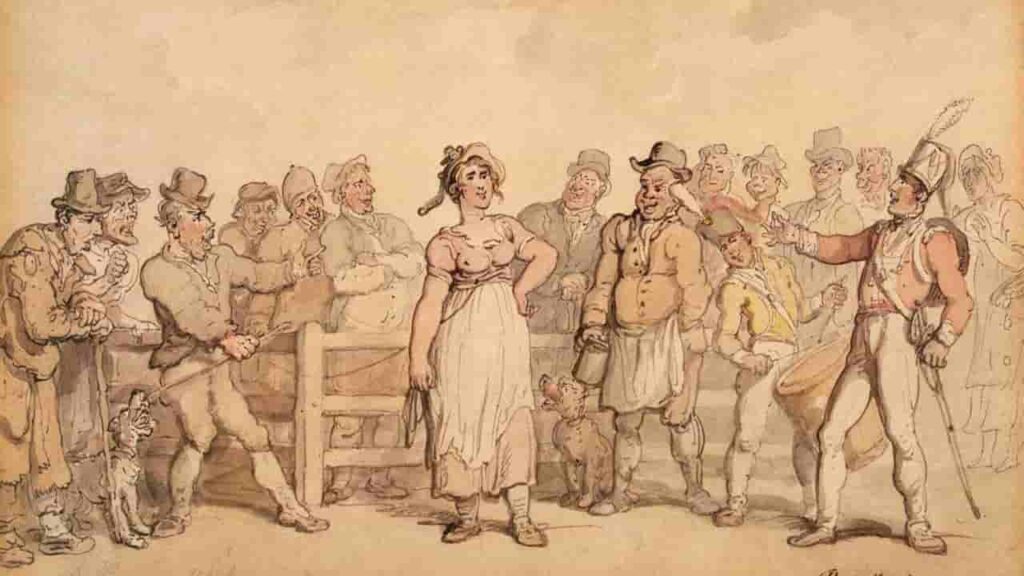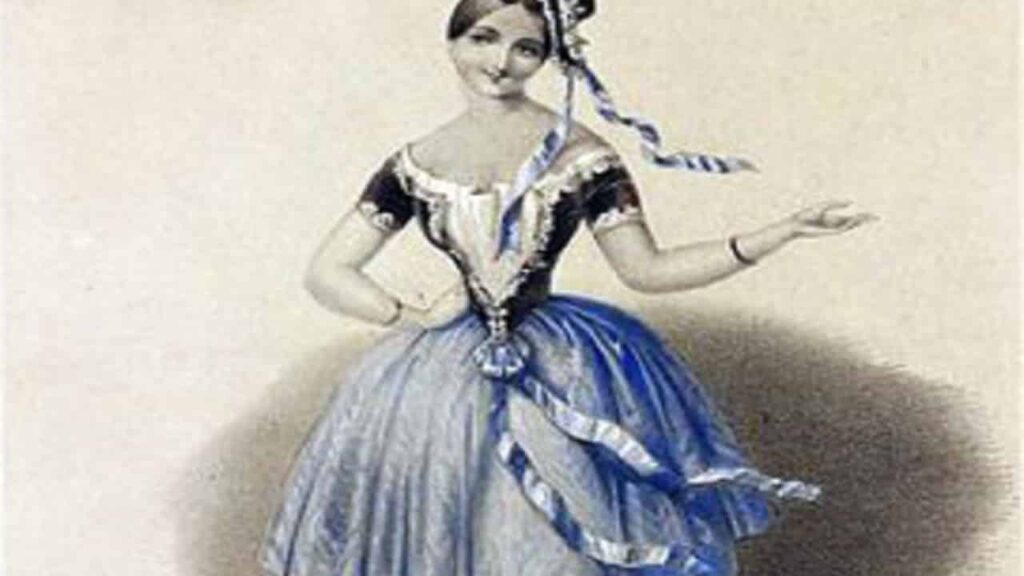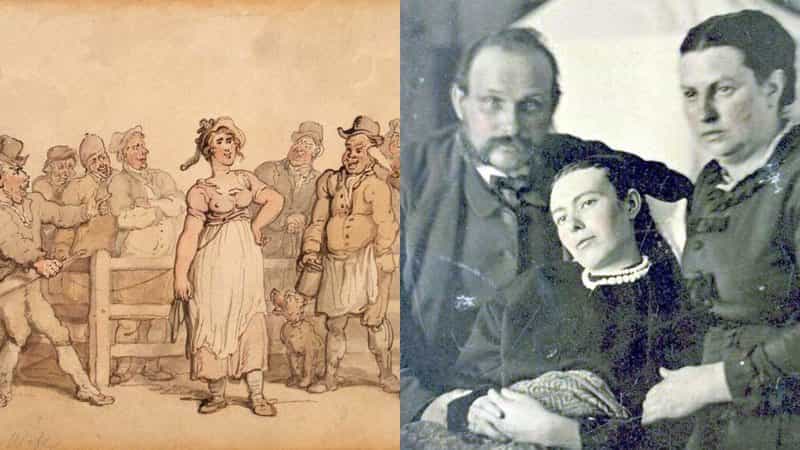During the nineteenth century, society was taken by specific customs and several narratives were presented during the Victorian era and regin of Queen Victoria.
Throughout this period, it became well known for its very curious and unusual rules and customs which are further explored in this article.
Selling Wives Through Auctions
During King Henry VIII’s reign, the Pope would not allow the king to divorce his wife, Catherine of Aragon. Consequently, this led to the creation of a new order of religion, Protestantism, whereby the act of separation was honored. Nevertheless, the right to divorce did not pervade the entire population.
The sale of wives emerged in the late eighteenth century, a time when the breakdown of marriage was still restricted to to wealthy Englishmen.
Thus, the most humble people seemed to have found a way to get rid of their wives via illegal transactions. The auctions were held in public spaces where husbands would take their wives to a designated and congregational spot for sale, and tie her with a rope around her neck, waist or wrist, where she was exposed to buyers.
In many cases, the sale could even be advertised in local newspapers, where everything was settled with whoever wanted the woman – often, even before the auction day.

Deadly Clothes
In the Victorian era, there was a real possibility that clothing could lead to death. Many garments of the time could contain toxic, flammable and high-risk components, such as flowing white cotton.
In addition, there were many incidents of wearing hats, a mandatory accessory to complete the Victorian look, which at the time were made with mercury.
Additionally, there are records of manufacturers at the time using poisonous pigments that could cause numerous wounds and skin damage, in addition to nausea, diarrhea and headaches in the population.
Furthermore, another problem faced by the Victorians was the infestation of fleas, lice and other parasitic vectors of disease such as typhus, which were usually found in changes of clothes or were found in women’s skirts when they came across mud and the dirty streets of England during that period.

Grief as Something Sacred
Rigor and formality were part of Victorian life, thus, several rituals were created at that time. Seemingly, one of the rituals became famous for the celebration of mourning.
People feared death and felt that by honoring those that were deceased they should be in mourning anywhere, whatever the situation and therefore, several rules regarding death and grief were popularized.
The first ritual was the indisputable use of black clothes and accessories. The length of time black was worn depended on the individual’s or family’s relationship with the deceased and potentially, it could last for months. No man or women could participate in social events until the mourning was over.
In other contexts, there were different rules and superstitions such as when you found a funeral procession, you had to turn your back. Another act was the custom of holding your breath as you passed a cemetery.
The bizarre Asylum, Bethlehem Royal
One of the oldest asylums in the world, Bethlehem Royal used a tactic to display patients who, according to the establishment, were treated and cured. To demonstrate this, they published pictures of patients from before and after entering the clinic.
Bethlehem Royal, also known as “The Bedlam Asylum” was famous for having comprehensive knowledge about mental health and for patients in chairs upside down and leaving them spinning for several hours.
Eternal Photo
In the Victorian era, the act of photographing people who were already dead was common. In an attempt to eternalize the image of those who left, the dead were photographed together with their living relatives.
When the photograph was taken, many family members gathered, while wooden and metal structures were placed on the corpse, so that it simulated the appearance of a living person.
An eternal photo was taken for the first time at the request of Queen Victoria, who after the death of her husband, Prince Albert, requested that the man be photographed, so that it remained for her as a souvenir.
First photo: Representation of the sale of wives. A couple beside their dead daughter – Wikimedia Commons




